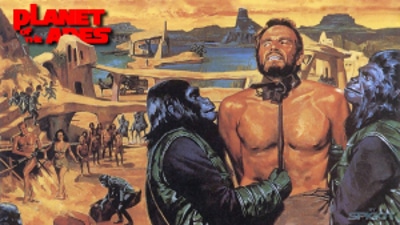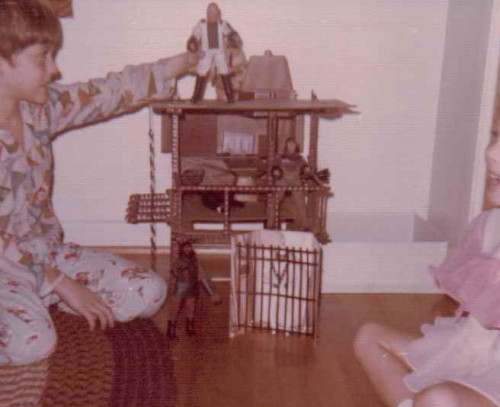
At NVIDIA the geek factor runs pretty high. And geeks have strong opinions on movies. At NVIDIA you will find Trekkies and “Star Wars” fans working side by side in harmony for the greater good of gaming. Transformers are a favorite of the younger crowd, and super hero movie fans are split between the DC and Marvel Universe factions. I’m part of a much smaller minority.
I grew up outside of Dallas and our local independent TV station changed the theme of their afternoon movies weekly. The station would rotate between themes such as Elvis week (a favorite of my older sister), John Wayne week (Mom’s favorite), and beach party week with Frankie and Dee Dee. This was the age of ‘appointment TV viewing,’ before VCRs, DVRs, or movies on demand. So when I escaped the 100 degree Texas heat and set up my action figures in their treehouse every day at noon during ape week, it was the best part of my summer vacation.

An Early Start
My movie franchise always has been and always will be “Planet of the Apes.” I started out young in my love for Apes, fueled by a mother who is a bona fide movie buff and installed a love for the art form in me. I love all things Ape: the classic movies that started it all, the B-movies that followed, the short lived TV series and even the ‘Walberg’ one. So I am thrilled at the high quality of the latest installments in the Apes series.
There is one downfall for a movie buff who works at NVIDIA. People at NVIDIA see things differently than other people. Most movies these days have a heavy emphasis on computer generated imagery (CGI). In the 15 years I have worked at NVIDIA, my eye has been trained to look for the flaws in those rendered objects.
My movie viewing downfall has come through my work with GameWorks, which we created to advance PC gaming. Over the years I have seen countless ‘before and after’ or ‘on and off’ demos as we advance gaming effects like fire, hair, water, and even characters. It trains me to see the little things that tell your mind ‘this is not real’ and kicks you out of that suspension of disbelief.
I learned from a FaceWorks demo called Ira that the human face is incredibly difficult to render realistically, and one of the hardest parts of the face to render is the human eye. I noticed it first in the film “Polar Express,“ a stunning achievement in CGI from 2004. But for me, the character’s eyes were a big distraction that I just could not ignore.
A Flawless Experience
This all leads to last night, as I sat in the darkness of the Alamo Draft House (whose lobby is coincidentally decked out in “Planet of the Apes“ decor) at the end of “Dawn of the Planet of the Apes.” Spoiler alert: The film ends with a dramatic, close-up shot of Caesar’s eyes. I had just seen a great entry of my all-time favorite movie franchise and I should have had some sort of an emotional reaction. But all I could think was, ‘Wow, his eyes look great.’
By continuously creating new graphics technologies, we push the state of the art and make gaming a richer and cooler experience. But we come close to ruining our own film experiences along the way. So it is a credit to the movie industry – which relies heavily on NVIDIA technologies – that I can sit through a Marvel, a Transformers or a “Planet of the Apes” film and not once spot a rendering shortfall that reminds me that the bulk of these movies are computer generated.